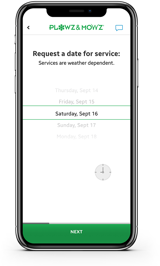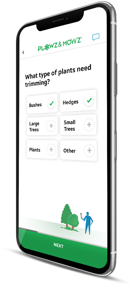Common Snow Shoveling Injuries
The most serious snow-shoveling injury probably won’t surprise you. It’s cardiovascular (heart and blood vessel). According to a 2011 study in the American Journal of Emergency Medicine, says Science Daily, while only 7% of snow-shoveling injuries are cardiac-related, 100% of them were fatal, according to the data in this study. If you’re over 55, you are 4.25 times more likely to experience them, the study found, and if you’re male, you’re twice as likely to suffer an event.
This isn’t too surprising if you’re aware that cold temperatures alone make your heart work harder, let alone when you add the exertion of shoveling to the stress. And don’t fool yourself. Shoveling snow and using a snowblower are equally physically demanding.
The 17-year research study lists the overall most common injuries as:
- • soft-tissue injuries (55%)
- • lacerations (16%)
- • fractures (7%)
The most common places injured while shoveling snow are:
- • Lower back (34%)
- • Arms and hands (16%)
- • Head (15%)
The most common types of injuries from shoveling are:
- • Acute musculoskeletal exertion (54%)
- • Slips or falls (20%)
- • Being struck by a snow shovel (15%)
Admittedly, we’re not quite sure how you manage to be struck by a snow shovel, but some of us are a little more careless than others. The bottom line is that it isn’t an activity to be taken lightly.
If you must shovel, treat it like the workout it is. Be sure you warm up, physically. The University of Vermont Extension Office advises us to warm up our muscles by walking or marching in place for a few minutes. Stretch the muscles in your arms, shoulders, leg, stomach, and back. Begin slowly and pace yourself.
Additional tips to avoid snow shoveling injuries, according to the National Safety Council, include:
- • Talk with your doctor to ensure that you’re healthy enough to shovel snow (if not, you’re going to have to hire someone, such as a neighbor kid or professional snow removal service). If you get the green light from your physician, be sure that you:
- • Do not shovel after eating or while smoking
- • Take it slowly
- • Shovel only fresh powdery snow as it’s lighter (which means you still may need help for the end of the driveway)
- • Push snow, if possible, rather than lifting it
- • If you must lift, take smaller scoops
- • Lift with your legs, not your back
- • Stop before you’re completely tired
- • Know the signs of a heart attack and stop immediately and call 911 if you experience any of them (see sidebar)
Signs of a Heart Attack According to the American Heart Association
- • Chest discomfort. Most heart attacks involve discomfort in the center of the chest that lasts more than a few minutes—or it may go away and then return. It can feel like uncomfortable pressure, squeezing, fullness or pain.
- • Discomfort in other areas of the upper body. Symptoms can include pain or discomfort in one or both arms, the back, neck, jaw, or stomach.
- • Shortness of breath. This can occur with or without chest discomfort.
- • Other signs. Other possible signs include breaking out in a cold sweat, nausea, or lightheadedness.
Posted on February 10, 2022
Order landscaping services for your home online, anytime!
Get a Free Online Quote Now
Leave the yard work to the pros this year, you can browse our services and schedule an appoinment online, anytime !

























